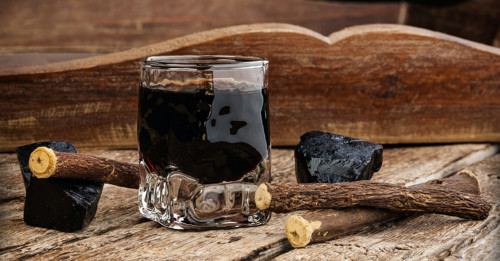Potable Bitters/Amaros Essential Info
- Color: Varies, often dark brown
- Region: Varies, though Italy is prominent
- ABV: Varies, 16%-30% and beyond
- Aged: Yes, though not for significant periods of time, only as a matter of finishing
- Made from: Spirits sweetened and/or infused with herbs, roots, spices, botanicals, fruits, etc.
- Commercial Examples: Nonino, Luxardo, Cynar, Campari, Fernet Branca, Ramazzotti
- Popular Cocktails: Amaros are used in many cocktails, increasingly (and more aggressively) with the rise of mixology
Generally in human eating and drinking, calling something “bitter” isn’t a great way to win it an audience. Revenge should be bitter, as should a woman scorned. But “bitters” in spirits language actually refers to a couple truly delicious—and yes, often bitter—categories of beverage.
We’ve dealt with straight “bitters” elsewhere—the non-potable kind, tiny bottles of highly flavored, usually spirits-based liquids that are used by the drops, as seasoning for cocktails. But bitter liqueurs, aka potable bitters, aka amaros (which just means “bitter” in Italian), are another category altogether. And they deserve some attention.
Like any liqueur, bitter liqueurs are made by sweetening and flavoring a base spirit. Unlike typical liqueurs—which span the gamut from creamy to spicy to floral—bitter liqueurs will always have a bit of an edge to them, that bracing bitterness that’s more or less present in the mélange of flavors. Despite what you might think, this doesn’t make them undrinkable. On the contrary, bitter liqueurs have been drunk on their own, especially as “digestivos”, for ages. And that’s because the same ingredients that lend amaros their “bitter” (and other) flavor characteristics have also been thought to have digestive—or other health-promoting—properties. Whether that’s actually the case matters less in these days of, well, established medicine. What matters is whether you prefer the bracing menthol-and-bark of a Fernet Branca, or like to settle in to a late, sunny afternoon with a tall glass of Campari and soda over ice.
As for the basic flavor profile of an amaro, well, that’s a bit hard to pin down. Some of the darker amaros feature things like herbs, bark, roots, citrus peel, spices, while other lighter amaros like Campari feature citrus peel, florals, and spices—nothing too dark, but still an edge. Terroir—where the ingredients are grown—can also have an impact, and ABVs can vary, from 16 to 35% ABV. Basically a beautifully bitter rainbow (which, yes, includes Jägermeister).
To get you started, a few more well-known Italian amaros:
- Fernet Branca – there are many kinds of “fernet” but this is the most well known, with deep root and spice flavors sliced through by a distinct minty freshness
- Campari – famously ruby red, grapefruit bitterness, florals
- Aperol – light, low ABV (11%), many flavors but predominating orange, gentian, rhubarb
- Cynar – bittersweet, made with artichoke (which terrifyingly dominates the label) but made with 13 herbs and botanicals, so it’s far more complex than, well, artichokey
- Amaro Nonino – lush with caramel and orange, cut through with herbs from the mountains of Friuli
- Luxardo Amaro Abano – Luxardo is a fairly big brand, known also for Luxardo Maraschino[link to Liqueurs] and their Amaro Abano is flavored with cardamom, cinnamon, and orange peel
- Cardamaro – actually a fortified wine (not technically a liqueur), a Moscato-based Italian amaro flavored with cardoon and blessed thistle, less power packing and more delicately nutty and spicy
- Amaro Ramazzotti – a blend of 33 herbs, fruits, and spices made in the Piedmont region of Italy, with sweet oranges peeking out the most even in this lushly dark liquid
